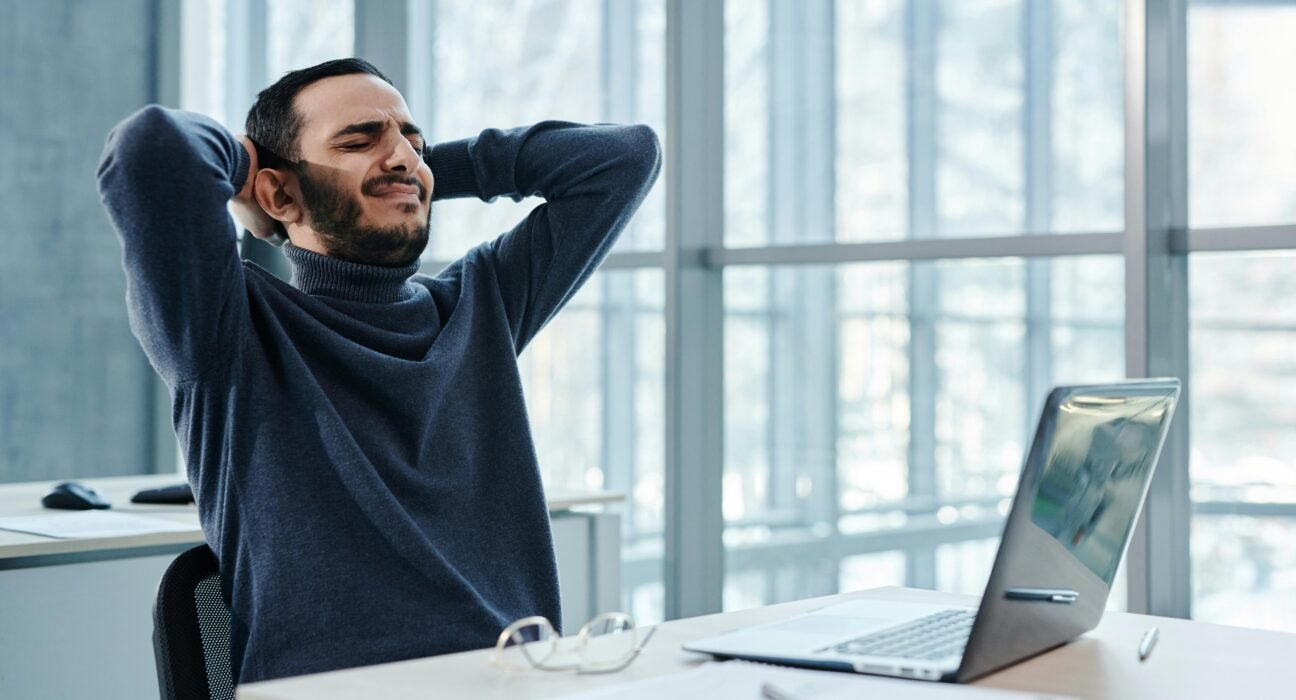Quick Relaxation Techniques at Work

Quick Relaxation Techniques at Work: A Guide for Busy Professionals
As a busy professional, managing stress at work is crucial for maintaining productivity and overall well-being. This article will explore practical relaxation techniques that can be easily incorporated into your daily work routine, specifically tailored for middle-aged individuals aged 40-55 in the United States.

Introduction
Stress is an inevitable part of modern work life. Long hours, tight deadlines, and the pressure to perform can lead to burnout and decreased productivity. However, there are simple yet effective ways to manage stress without leaving your desk or taking a long break. Here, we’ll delve into quick relaxation techniques that can help you recharge and refocus throughout the day.

Why Relaxation Matters
Relaxation is not just a luxury; it’s a necessity for maintaining mental and physical health. Chronic stress can lead to anxiety, depression, and a weakened immune system. By incorporating relaxation techniques into your daily routine, you can:
-
Improve Focus: Reduce distractions and enhance concentration.
-
Boost Productivity: Manage tasks more efficiently and effectively.
-
Enhance Creativity: Clear your mind to approach problems with fresh perspectives.
-
Promote Well-being: Reduce the risk of stress-related health issues.

Quick Relaxation Techniques

1. Deep Breathing Exercises
Deep breathing is one of the simplest and most effective relaxation techniques. It involves focusing on your breath to calm your mind and body.
How to Practice Deep Breathing:
-
Find a Comfortable Position: Sit or stand with your back straight.
-
Place Your Hands: Put one hand on your stomach and the other on your chest.
-
Breathe In: Inhale deeply through your nose, allowing your stomach to rise while your chest remains still.
-
Breathe Out: Exhale slowly through your mouth, allowing your stomach to fall.
-
Repeat: Continue for several breaths, focusing on the sensation of your breath .2 .5.
2. Mindfulness Meditation
Mindfulness meditation involves focusing on the present moment to reduce stress and increase calmness.
How to Practice Mindfulness Meditation:
-
Choose a Quiet Space: Find a quiet spot where you can sit comfortably.
-
Close Your Eyes: Focus on your breath or a mantra.
-
Let Go of Thoughts: When your mind wanders, gently bring your focus back to your breath.
-
Start Small: Begin with short sessions, like 5-10 minutes, and gradually increase as you become more comfortable with the practice .3 .5.
3. Physical Stretching
Stretching can help relieve tension and improve circulation.
Simple Desk Stretches:
-
Neck Stretch: Slowly tilt your head to the side, bringing your ear towards your shoulder. Hold for a few seconds and then switch sides.
-
Shoulder Rolls: Roll your shoulders forward and backward in a circular motion.
-
Wrist Extensions: Hold your arm straight out in front of you and lift your hand up, then down, stretching your wrist .3 .10.
4. Aromatherapy
Certain scents can promote relaxation and reduce stress.
How to Use Aromatherapy:
-
Choose Calming Scents: Lavender, peppermint, and chamomile are popular for relaxation.
-
Use a Diffuser: Place a diffuser on your desk to spread the scent throughout the room.
-
Apply Topically: Use essential oils in lotions or sprays for a quick pick-me-up .9.
5. Journaling
Writing down your thoughts can help process emotions and clear your mind.
How to Use Journaling:
-
Keep a Journal Handy: Have a notebook at your desk.
-
Write Freely: Write down whatever comes to mind without editing.
-
Reflect on Your Thoughts: Use journaling to identify stressors and brainstorm solutions .1.
Implementing Relaxation Techniques in Your Workday
Incorporating these techniques into your daily routine can be simple:
-
Schedule Breaks: Take short breaks every hour to stretch or meditate.
-
Use Apps: Utilize apps that guide you through deep breathing exercises or meditation.
-
Create a Relaxing Environment: Add plants or calming artwork to your workspace.

Conclusion
Relaxation is not a luxury; it’s a tool for maintaining productivity and well-being. By incorporating these quick relaxation techniques into your workday, you can manage stress more effectively, improve your focus, and enhance your overall quality of life. Remember, taking care of yourself is essential for achieving success in both your personal and professional life.

Additional Tips for Middle-Aged Professionals
As you navigate the challenges of middle age, it’s essential to prioritize self-care and stress management. Here are some additional strategies tailored to your lifestyle:

1. Prioritize Time Management
Effective time management can reduce stress by helping you stay on top of tasks. Consider using techniques like the Pomodoro Technique, which involves working in focused intervals followed by short breaks .3.

2. Promote Work-Life Balance
Maintaining a healthy balance between work and personal life is crucial. Set boundaries by not checking work emails during non-work hours and engage in activities that bring you joy outside of work .3.

3. Stay Active
Regular physical activity can significantly reduce stress and improve mood. Try to incorporate some form of exercise into your daily routine, even if it’s just a short walk during lunch .3.

4. Seek Support
Don’t hesitate to seek support from colleagues, friends, or family members. Sharing experiences and emotions can help you feel less isolated and more supported .3.

Engaging with Your Audience
To make your content more engaging, consider the following strategies:
-
Use Storytelling: Share personal anecdotes or examples that your audience can relate to.
-
Incorporate Visuals: Add images or infographics to break up text and enhance understanding.
-
Encourage Interaction: Invite readers to share their own relaxation techniques in the comments.
By focusing on these strategies, you can create content that resonates with your audience and provides them with practical solutions for managing stress at work.

Final Thoughts
Relaxation is a powerful tool that can transform your work experience. By incorporating these quick and effective techniques into your daily routine, you can improve your productivity, enhance your well-being, and maintain a positive outlook even in the most challenging situations. Remember, taking care of yourself is the first step towards achieving success in all aspects of your life.

References
– .1 Nivati. (n.d.). 12 Best Workplace Stress Relief Techniques for the Office. Retrieved from .https://www.nivati.com/blog/12-best-workplace-stress-relief-tips-techniques
– .2 All Health Matters. (2022, March 7). 5 Relaxation Methods to Practice at Work. Retrieved from .https://www.allhealthmatters.co.uk/post/5-relaxation-methods-to-practice-at-work
– .3 Nilo Health. (2025, February 5). 10 Effective Ways to Reduce Workplace Stress. Retrieved from .https://nilohealth.com/blog/10-effective-ways-to-reduce-workplace-stress-and-boost-productivity/
– .5 Indeed. (2025, March 4). Relaxation Techniques to Use When You’re Stressed at Work. Retrieved from .https://uk.indeed.com/career-advice/career-development/relaxation-techniques
– .9 Indeed. (2023, August 31). 11 Simple Strategies To Relax at Work. Retrieved from .https://www.indeed.com/career-advice/career-development/ways-to-relax-at-work
– .







